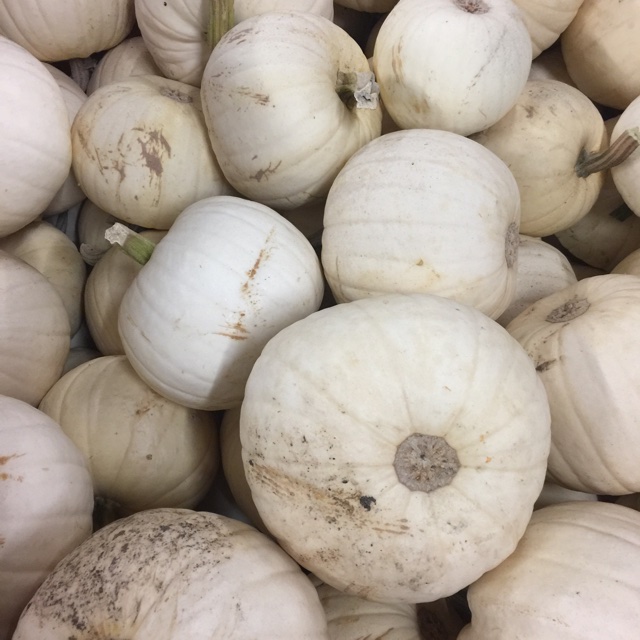
however, as a cultivated variety, be aware that it may be subject to certain restrictions or prohibitions on propagation. The plants grow from seeds, reaching 1 to 2 feet tall and will produce their fruits in the early Autumn season. Pumpkin plants will vine outwards and require plenty of room to grow. Lumina White will be ready for harvesting in roughly 95 days. This is a selected variety of a species not originally from North America. Lumina White produces pale white colored pumpkins with orange colored flesh. Consider applying a thick mulch around the root zone over the growing season to conserve soil moisture. It is somewhat tolerant of urban pollution. It is not particular as to soil pH, but grows best in rich soils. It does best in average to evenly moist conditions, but will not tolerate standing water.
LUMINA PUMPKIN FULL
It should only be grown in full sunlight. This plant is typically grown in a designated vegetable garden.

This vegetable plant is an annual, which means that it will grow for one season in your garden and then die after producing a crop. When planted in rows, individual plants should be spaced approximately 3 feet apart. Lumina Pumpkin will grow to be about 18 inches tall at maturity, with a spread of 6 feet. The fruit are most often used in the following ways: It produces white round fruit with orange flesh which are typically harvested when mature. Lumina Pumpkin is an annual vegetable plant that is commonly grown for its edible qualities. Materials: sulfur and whole milk, mineral or other oils in combination with potassium bicarbonate.Ĭultural control: Striped Cucumber Beetle is vector-control it choose resistant varieties.A spooky selection that is both decorative and delicious producing large, 12lbs white pumpkins that give way to bright orange flesh a lovely sweet flavor and texture, excellent for baking, soups, stews and roasting Materials: Pyrethrum on young nymphs, AzaMax.Ĭultural controls: butternut squash is resistant, maximas & pepos susceptible rotation, plow in squash vine debris soon after harvest, use floating row covers, watch for wilting plant parts and destroy borer within.Ĭontrols: Use small plots to slow spread, plant indeterminate (viney) varieties, control weed competition. Lumina is wonderful for painting (very smooth skin), carving, and baking the flavor and texture are excellent Pumpkins are 810 in diameter and weigh 1012. Squash bugs lay their brown-brick red egg clusters on the underside of the foliage, often next to the central vein-destroy egg clusters on undersides of leaves. Materials: Surround, Pyrethrum ( PyGanic).Ĭultural controls: rotation, till in cucurbit debris before winter and plant a cover crop, boards on soil surface near squash will attract bugs overnight which can be killed, avoid mulching. Dry and store.ĭiseases: BR: Black Rot, PM: Powdery MildewĬultural controls: use tolerant or resistant varieties, rotate crops, till under crop debris soon after harvest, use floating row covers until flowers appear, use plastic mulch, perimeter trap cropping ( Black Zucchini and Blue Hubbard make particularly good trap crops), use yellow sticky strips, hand-pick early morning when beetles are very sluggish. If you can pull off the variety isolation, processing the seeds is easy: rinse seeds from the guts of fully ripe and cured pumpkin. This is difficult for most gardeners-you may have to communicate and collaborate with neighboring gardeners, or exclude insects from blossoms and hand-pollinate. You must isolate varieties of the same species by half a mile if you want true-to-type seed. Varieties of the same species will cross readily, but crossing will not occur between the different species. Saving Seed: Saving pumpkin seed is challenging! We list three species of the genus Cucurbita: C. Minimum germination temperature 60°, optimal temperature range 70–90°.

Inspect periodically and be sure to use damaged, stemless or small fruit first. Store under proper conditions, at least 50° and 60–70% relative humidity in a place with good air circulation. To improve flavor and storage, field cure for at least 10 days after harvest, covering if hard frost threatens. The Lumina Pumpkin is absolutely stunning Its everything you love about fall, but in an updated color palette thats modern yet classic. Pumpkins can take one or two light frosts on the vine. Excessive heat and/or drought can prevent blossom set, reduce yields. Transplant bush varieties 18" apart, vining varieties 30" apart. Transplanting: Start indoors three weeks before setting out. Use row covers and low tunnels to hasten maturity and reduce insect damage. Direct seeding: Sow 4–5 seeds per hill when weather has warmed after danger of frost. maxima (jack-o’-lanterns, decorative and culinary).Ĭulture: May be direct-seeded or transplanted. “Pumpkins” listed here are three species Cucurbita pepo (mini pumpkins, small pie and some jack-o’-lanterns), C.



 0 kommentar(er)
0 kommentar(er)
